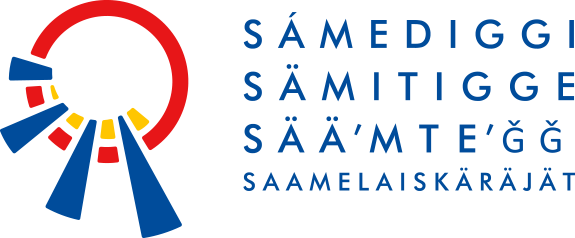Sámi Language Nests and Cultural Activities in Finland
Here you can read more about the Sámi language nests in Finland and how they are administered.
Sámi cultural and language nest operations have expanded significantly in recent years. The first experimental language nest in the Sámi region in Finland was a Skolt Sámi language group in Sevettijärvi. The language nest operated for a few months in 1993 but did not yet lead to permanent activity. In 1997, two Inari Sámi language nests began: one run by the Inari Sámi Language Association (Anarâškielâ servi ry) in Inari village, and another administered by the municipality of Inari in Ivalo village, alongside a Skolt Sámi language nest in Sevettijärvi village. Initially, the language nests operated with various project-based fundings. The Inari Sámi Language Association’s nest has continued without interruption, and in 2009 a new Inari Sámi nest was established in Ivalo, followed by another group in Inari in 2011. The first North Sámi language nest was founded in Vuotso in 2007. Skolt Sámi activities resumed after a break in Ivalo in 2008 and in Sevettijärvi in 2010. Northern Sámi groups have since been established as follows: in 2012 in Utsjoki and Karigasniemi, in 2013 in Helsinki, in 2015 in Oulu, Rovaniemi and Sodankylä, and in 2018 in Nuorgam and Hetta (Enontekiö). The Helsinki language nest was closed in 2018.
Currently, there are a total of 12 Sámi cultural and language nest groups in Finland: two in Skolt Sámi, three in Inari Sámi, and seven in Northern Sámi.
Sámi Language Nest Administration
The Ministry of Education and Culture grants annual funding to secure Sámi cultural and language nest activities. Since language nest operations are not mandated by law, they do not have a permanent place in the government budget, and therefore funding is allocated one year at a time. This funding is coordinated by the Sámi Parliament. Municipalities, cities and organisations that organise language nests apply for funding from the Sámi Parliament, and the distribution of funds is based on joint negotiations and decisions made by the Sámi Parliament’s Language Council. Government funding is intended to cover essential operating costs, and organisers are expected to contribute at least 15% of the costs themselves.
Language nests are mainly administered by the municipalities and cities where the groups operate. These activities are part of municipal early childhood education, which involves the usual application process and early childhood education fees charged to parents or guardians. In Inari, three Inari Sámi language nest groups are administered by the Inari Sámi Language Association. The municipality of Inari has a service purchase agreement with the organisation, so this is considered municipal early childhood education. Throughout the history of Sámi cultural and language nest activities, a few other organisations have also organised language nests. These activities are pedagogically and administratively demanding, and running them on a voluntary basis has proven to be very challenging.
The Sámi Parliament employs a fixed-term language nest coordinator whose duties include managing grants, providing pedagogical support to language nest staff, advising parents, and overseeing and developing the activities in general. This coordinator is the primary contact for all questions related to language nests. Contact details for the coordinator can be found here. In addition, the Sámi Parliament’s Language Protection Secretary supervises cultural and language nest activities. Decisions concerning the activities are made by the Sámi Language Council, while broader policy guidelines are set by the Sámi Parliament’s Plenum.
Currently, the need and demand for language nests is larger than the resources secured by government funding. Constraints imposed by funding and shortage of trained, language proficient staff make it difficult to organise language nests as well as other language and culture revitalisation efforts. In its funding decisions, the Sámi Parliament prioritises the continuity of existing language nests but also works to increase funding and expand activities. Training and upskilling professionals help strengthen the human resources in early childhood education. Those wishing to establish a new Sámi-language nest are encouraged to contact the Sámi Parliament – together we can explore how to move forward!



